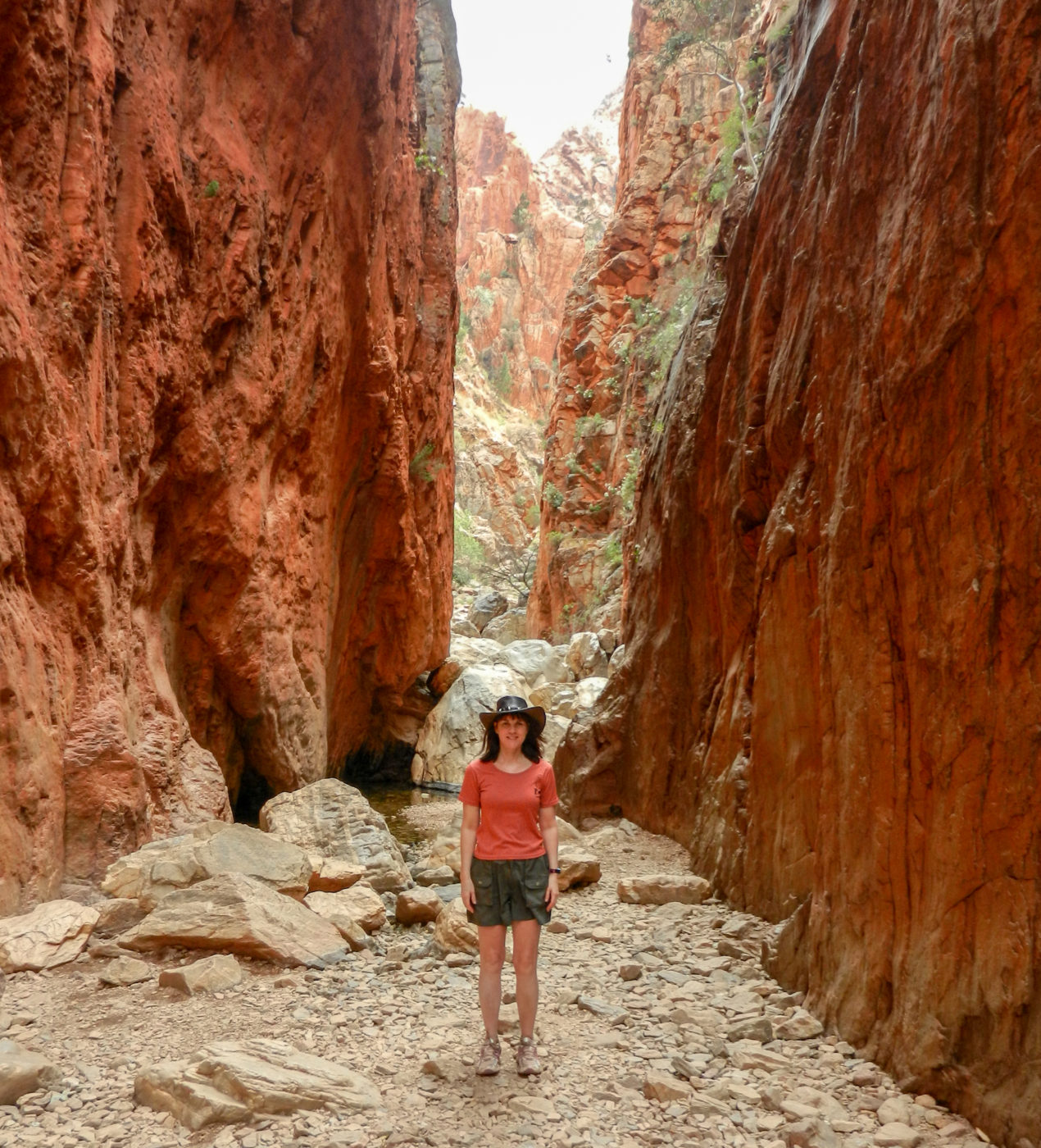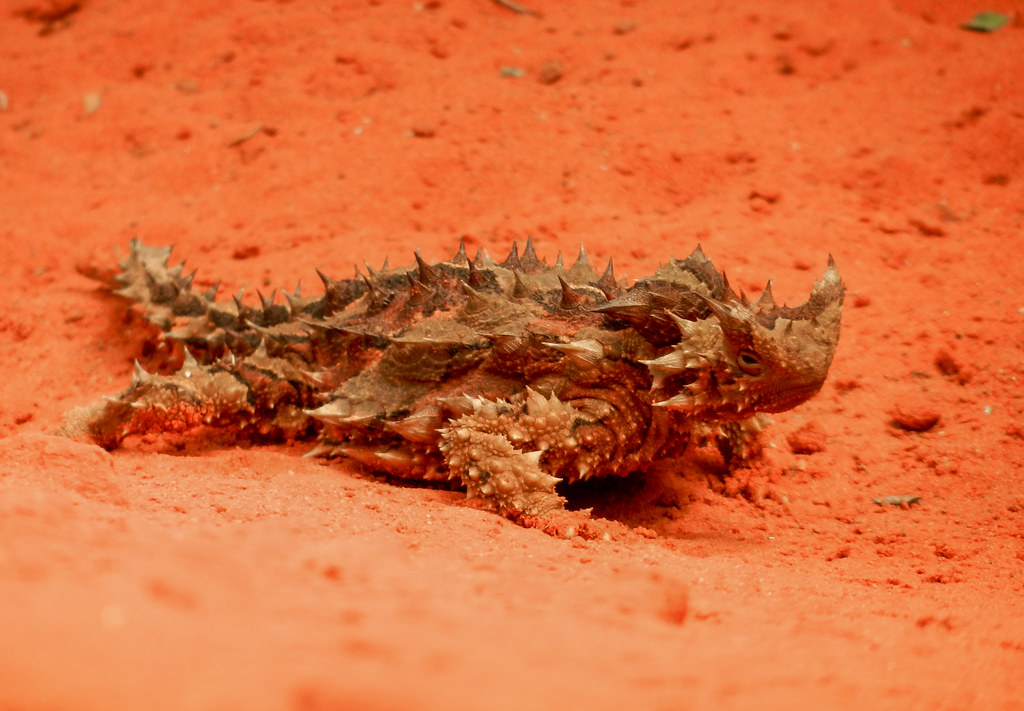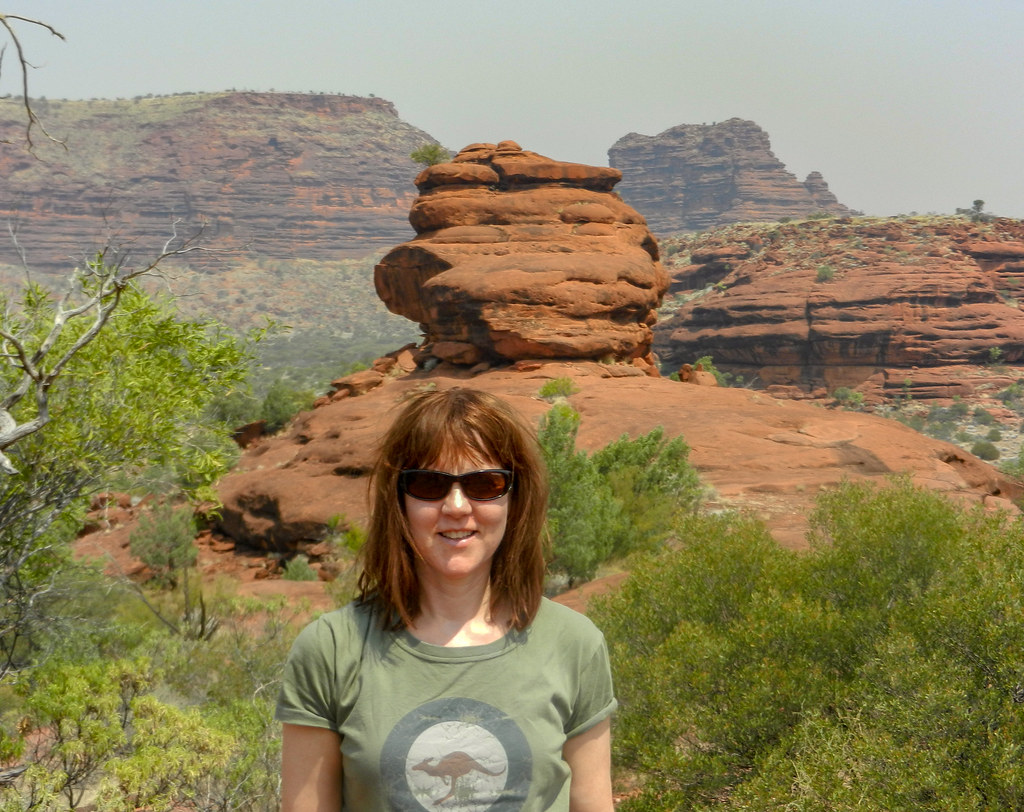Palya (Aboriginal greeting) from historic Alice Springs, aka “the Alice,” the heart from which to explore the Australian Outback. It’s also a tourist center to visit the world-renowned Uluru-Kata Tjuta National Park, 6 hours away by bus. Moreover, the Alice is an incredible place to explore the rich culture of the Arrernte-Aboriginal People. I enjoyed my solo travel here and love sharing tips on Alice Springs Australia Attractions.
However, just outside Alice Spring’s back door is a plethora of parks and wilderness areas with considerably less crowds. According to some people, Alice Springs area is even more naturally stunning than Uluru-Kata Tjuta National Park. During my stay in the Red Centre, I explored the 2-hour radius of Alice Springs, going to Alice Springs Desert Park, Reptile Gardens, Finke Gorge National Park, and West MacDonnell National Park.
Alice Springs Australia Attractions
Alice Springs Desert Park
My first day here, I took a shuttle 20 minutes outside of town to the Alice Springs Desert Park. This park provides an introductory course on the flora and fauna of the Red Centre. I walked on trails of this 3212-acre park with 3 habitat areas: Desert rivers, Sand country and a Nocturnal house. This was a wonderful opportunity to learn about the plants, reptiles, birds, and animals indigenous to the central Australian outback. I was pleasantly surprised by the thriving, prolific environment full of color and animation, despite the dry, desert terrain. The bright variety of wildflowers, such as, honey grevillea, pink everlastings and desert pea embellished the ubiquitous red dirt.
Additionally, the kaleidoscope of birds are a beautiful dance of colors in the air. My favorite birds were the exquisite Blue Fairywren, a boisterous flock of Pink Galahs and a Red-backed Kingfisher. As is the case in most deserts, the wildlife is predominantly nocturnal. I did the nocturnal tour, with head lamps to observe wildlife, such as, reptiles, an echidna (“spiny anteater”) and a mala (wallaby).
Kangaroos at Alice Springs Desert Park
At Desert Park I caught some very humorous and unique moments, alone, with a kangaroo. I was in their territory with no fence in between, just hanging out with a kangaroo about 6 feet away. I have learned to be quiet and still, in order to develop an instinctive rapport with these animals. Then just be patient and see what happens. Animals never disappoint me, and I’m constantly surprised at their humor and tendency to show off.
After hanging out with this one kangaroo for about 10 minutes, he just suddenly rolled over on his back with his lower legs in the air all sprawled out. He was just letting it all hang out, with his stub arms clumsily stranded above his chest. After a minute on his back, he rolled over to his other side. Meanwhile, I just laughed and smiled fully entertained. I love having those kinds of experiences with animals. With wildlife, there’s a spontaneous element of surprise, leaving me in humorous awe at their primal innocence.
Alice Springs Reptile Centre
In Alice Springs, I continued my wildlife education at the well-known Alice Springs Reptile Centre. It exhibits the most poisonous snake in the world that’s indigenous to Australia, the Inland Saipan. Australia has 18 of the 20 most poisonous snakes in the world and also some of the most poisonous spiders. Australia has this rugged reputation for having the most spiders and snakes that can kill you.
But interestingly, I realized Australia has virtually no dangerous, land animals. The big exception is the salt-water crocodile in the “Top End.” Maybe, this is why these reptiles evolved to such a lethal level without predators. The Thorny Devil was my favorite, as a little creature with thorny spikes all over its face and body. Its little eyes pierce through the thorns, darting at me with laughter, as though to say I dare you to touch me.
Finke Gorge National Park
Just an hour ride outside of Alice Springs, there is the unique ecosystem at Palm Valley. These tropical trees in the desert terrain at Finke Gorge National Park, are only accessible by a 4-wheel drive. I joined a tour group, venturing off in a big 4-wheel drive truck, perched up on 5-foot wheels. Because Australia is the oldest continent in the world, it’s common to feel back in time and witness ancient repercussions still very much alive and adapting to the modern world.
The Finke River is the oldest river in the world, carving out the intricate and colorful layers of time in the beautiful gorge. After treacherous, but fun driving along rugged terrain, we set off to bush walk in Palm Valley. This insular ecosystem is prolific with Livistona Mariae Palms (aka Red Cabbage Palms). They are part of Central Australia’s tropical past, continuing to survive in the desert terrain due to the semi-permanent spring-fed pools.
This area evokes the chilling “Jurassic Park” moments. We bush-walked along the dry river bed, and then climbed and walked along a clifftop viewing below the exotic splendor of the valley. The only disappointment was that gray skies lingered all week from the bush fires.
West MacDonnell National Park: Simpson’s Gap, Stanley Chasm, Glen Helen Gorge and the Ochre Pits
West MacDonnell National Park – Alice Springs Australia Attractions
West MacDonnell National Park is another treasure at the western back door of Alice Springs. Following the mountain range, there are many stops to see various geological masterpieces, displayed in unique rock formations and designs. This park is the canvas for stunning artistry, where nature can reveal its rich, earthly color spectrum.
I signed up with one of the local tour groups to see the prominent sites at this park. At each stop, we bush walked to environmental monuments, such as, Simpson’s Gap, Stanley Chasm, Glen Helen Gorge and the Ochre Pits. Stanley chasm was very humbling to encounter, where I meekly stood in the 30-foot chasm between two 80-meter canyon walls. The rusty greens, browns and golden lights reflecting from the silent rocks are a breathtaking window into Mother Nature’s ancient beauty.
The Ochre Pits or “Stone of Dreamtime”
The Ochre Pits was one of my personal favorites. Here, the Aborigines mined their “Stone of Dreamtime.” It was a colorful surprise to see that ochre is red, yellow, brown, or purple. Sometimes, the ochre is vertically etched from the earthen walls, clearly divided by colors of golden yellow, crimson red and rusty orange. However, other sections are a colorful montage of primary ochre hues, blended into an earthly tone of harmony. Ochre was used in Aboriginal art and ceremonies for thousands of years. The Aborigines considered these natural mineral pigments of this clay to be the blood of ancestors and called the “Stone of Dreamtime.”
Related: Scenic Walkabout at Australia’s Iconic Uluru or Ayer’s Rock
Overall, Alice Springs Australia Attractions
My walkabouts here gave me an opportunity to absorb the essence of the Outback! I truly recommend that anyone traveling in the Red Centre, explore these ancient and sacred lands near Alice Springs. For me, it was an authentic way to explore with less crowds the Outback’s stunningly unique landscapes and wildlife, along with its rich Aboriginal Culture.
Read More!
Perth, Australia’s Top 10 Attractions – The World’s Most Remote City
Iconic Sydney Travel Highlights – The Gateway to Australia







